Promoting Tolerance 2012 USA Trip, Picture Story by Marine Petrosyan

The “Promoting Tolerance” Story by Marine Petrosyan - an alumnus of the “Promoting Tolerance” programme. Chief specialist in the State Committee of The Real Property and Lecturer assistant in the Armenian State University of Economics.
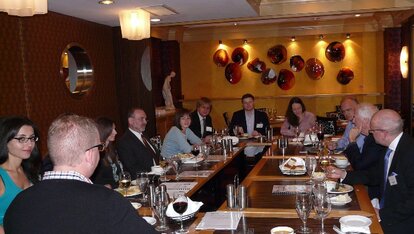
- The welcome dinner at the Washington Beacon Hotel restaurant was a very warm start for the program. The whole group was reunited for the first time since Berlin. We were glad to meet Rabbi Andrew Baker, Director of International Jewish Affairs for the AJC, again and meet Sara Weller, the AJC’s Project coordinator, and Claus Gramckow, the FNF’s representative for the USA and Canada, FNF. At the first meeting, we already knew the whole trip had an adventurous and interesting programme.
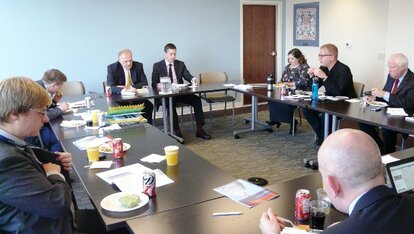
- I liked the breakfast meeting at the Washington AJC office, especially because it was there that we discussed the social issues of disabled people. In Armenia, this is one of our biggest challenges yet these issues are not even discussed. For disabled people, Armenian society is very badly adapted for living to say nothing of employment. This is why I was very interested to listen to Patrick Cokley, from the U.S. Department of Labor, Office of Disability Employment Policy, to know how these issues are treated in the US.
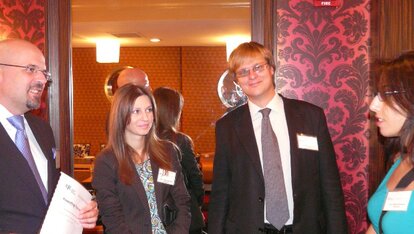
- The young diplomats’ reception at the National Press club was very impressive. These events are a good chance to meet new people and have brief talks with them in order to get more information about topics that you may later deal with. The latest discussion topics were certainly the presidential elections and the two candidates’ political debates. I can’t imagine people in Washington talking these days without mentioning the presidential elections.
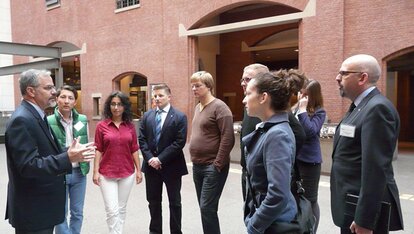
- The next day we had one of the most memorable events of the whole trip, the visit to the United States Holocaust Memorial Museum in Washington. The museum tour, guided by Daniel Napolitano, was a unique experience, a chance to learn more about Holocaust. After the tour we all left the exhibition hall with a profound wish that the world would never experience such a thing again. I liked the speech by Mr Napolitano, when he explained why we were there. He said: “If you can’t teach everyone, then you have to choose who to teach.” And I felt very lucky to be there.
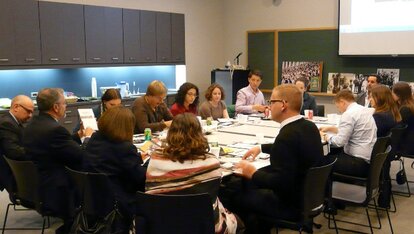
- In the museum, besides all the historical photos and other items to see, there were also very interesting halls and rooms, where you could read and watch more about world history, the genocide issue, etc. I enjoyed having the opportunity to create a pledge to the museum by answering this question: What we would do to prevent the world from experiencing another genocide?
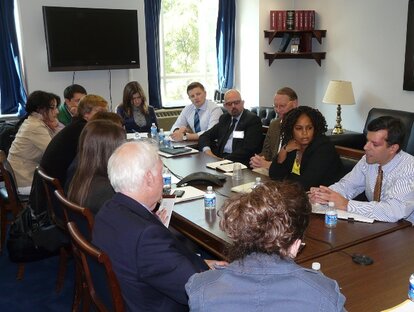
- After the Museum we visited the US Helsinki Commission. This meeting was of a great interest for those participants who were specialists in international diplomacy and world affairs.

- The next day we took train to New York, feeling sad to leave Washington, which I liked very much, but looking forward to new meetings in the new environment of New York.
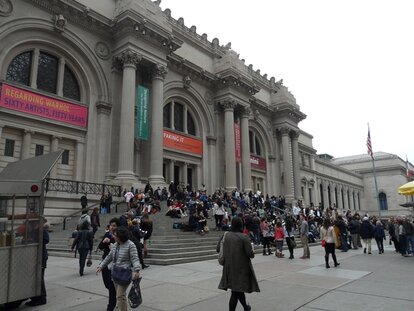
- Despite the fact that we were a little bit tired, we enjoyed our visit to the Metropolitan Museum of Art in New York, especially since this was a comprehensive guide to a world of different cultures.
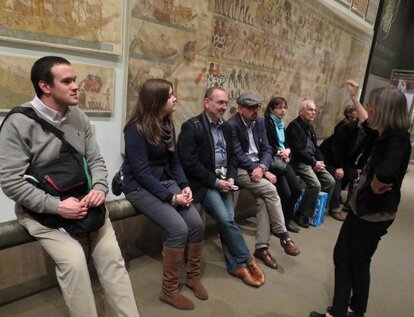
- It is really hard to imagine the sizes of the halls here, filled with unique and diverse artefacts from different epochs. I personally was impressed by the exhibition on Muslim culture and by the paintings of European artists.
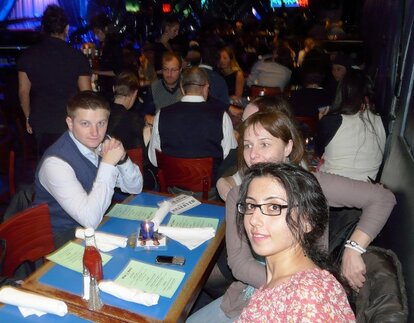
- The evening event for that day was a jazz music performance at Blue Note Café, where we enjoyed great musicians performing and, I think this was one of those places that helped us to feel the breath of New York within a short time. Though I had the impression that New York is a city of consumerism, it still has its unique characteristics.
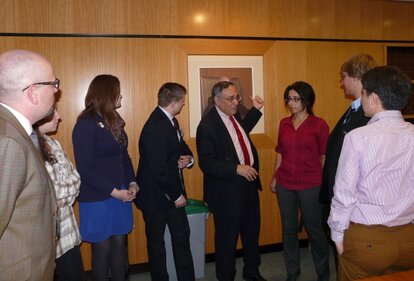
- The next day in New York started at the AJC office with Dr Steven Bayme. This meeting was especially valuable because of the information it provided about contemporary Jewish life in the USA. People usually talk about Jewish history so this was a good opportunity to know more about the real life that Jews live now.
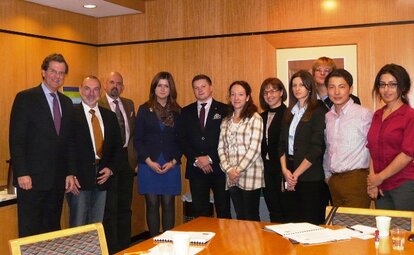
- This meeting was followed by a discussion with David Harris, the Executive Director of the AJC. His was a very energetic, eloquent talk by a skilled professional and spiced with a bit of humour.
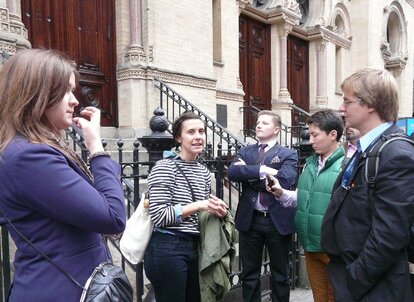
- That night we had a good chance to walk around the streets of the city and pay attention to how daytime changes to night-time and how New Yorkers revive, ready for nightlife.
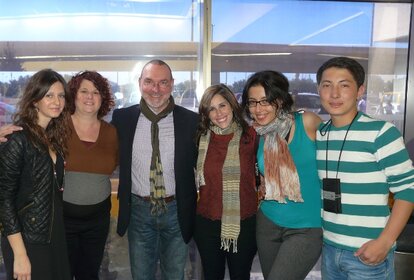
- The next city waiting for us, filled with excitement and fresh surprises, was Dallas (the other two groups went to St. Louis and Miami). Our first impression of Dallas (aside from our damaged luggage) was our brilliant, very cool coordinators, Brett and Ann.
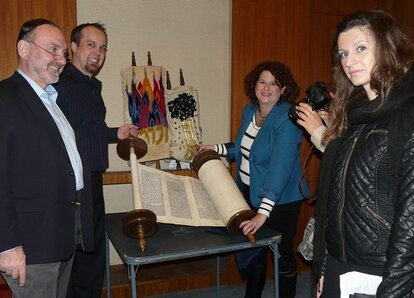
- The Shabbat service and hosting by a local synagogue, with its introduction to special Jewish traditions and to exhibitions of Jewish relics, impressed me so much that I wanted to know more and more about it all. The Jewish people never stop teaching and studying their religion and traditions, and they do that with pleasure.
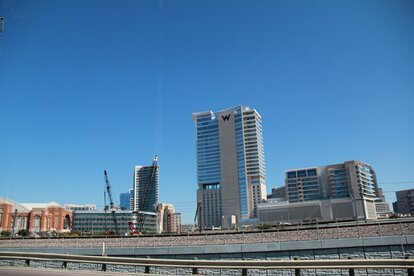
- If you ask me to describe Dallas in a few words, I would say that Dallas is “The city of freedom”. It really gives you a feeling of freedom when you drive, walk, live or even just breathe. Dallas also has a cultural art district, where you can see different schools of art. This also impressed me very much. As you can notice, we had a great chance and we used it to know a different culture from the core. This is what makes this trip, this PTP program and this trip very special and unique.
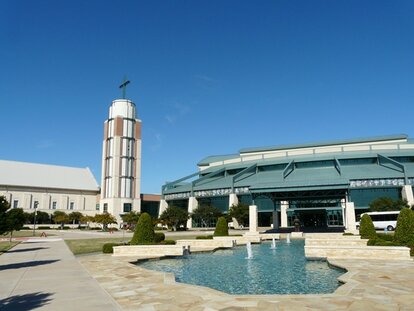
- Dallas, Megachurch for 7000 people
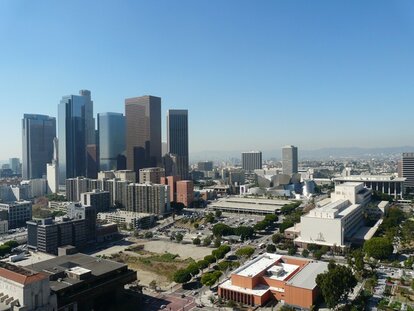
- Though we were sad to leave Dallas, in Los Angeles we were going to meet other participants who had been in Miami and St. Louis. Despite the fact that we had spent only two days apart, we missed each other very much and had a lot to share.

- Besides, Los Angeles also had some surprises for us. The LA program started with a welcome dinner at Cole Ettman’s house, an AJC ACCESS board member. Los Angeles is known as a city where a big Armenian community is located. I even had a chance to meet some of my friends. During the dinner, we enjoyed some special Persian cuisine. The group was very glad to reunite with Sara Weller again.
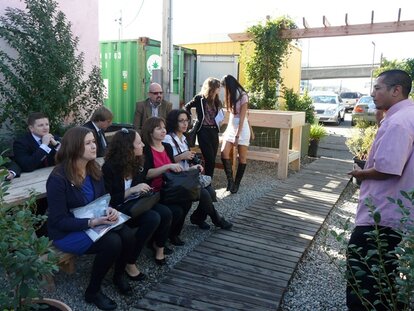
- The next day, our group of participants visited one of the programme’s most memorable places – Homeboy Industries. The tour guide Francisco, told the story of this community, how it started, what it was meant for, and what stories the members had. Astonished is a very weak word to describe our impression of this place and of Francisco’s personal story in particular.

- The desire of the members of Homeboy Industries to change their lives, to leave the gangster life and start earning money honestly was so obvious. They say the hardest victory is the one that you gain over your own personality. And this community is growing constantly. Other people believe in them and donate money. Homeboy Industries can serve as a fine example for other countries to solve their local problems within specific communities.
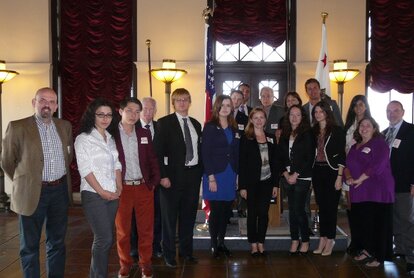
- The meeting and tour at the City Hall of Los Angeles was the programme’s very last official meeting but it was also informative because our hosts shared with us the methods and structure of their work. We also had some very interesting evening activities in Los Angeles. That was the last day of the Promoting Tolerance Programme, and it was full of emotions, impressions, the sharing of opinions, etc.